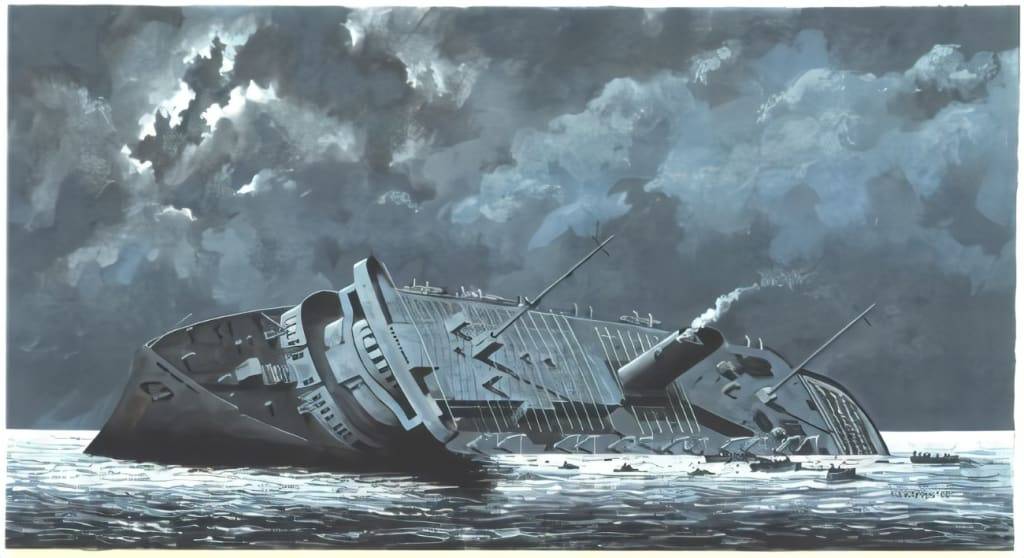Introduction
Hey, Thoughty2 here. As the captain of a large cruise ship crossing the north Atlantic, you're well aware of the dangers at sea, with flooding being the most common reason for shipwrecks. Yet, when you think of maritime disasters, "icebergs" and the sinking of the Titanic may come to mind. However, a far more significant and lesser-known tragedy occurred during World War II - the sinking of the Wilhelm Gustloff. This massive cruise liner turned evacuation ship met a heart breaking end, resulting in one of the deadliest maritime disasters in history, with a death toll surpassing even that of the Titanic.
The Eve of Desperation
In January 1945, as World War II neared its end, the Russian army advanced from the east, closing in on Nazi Germany's Third Reich. Operation Hannibal, the largest mass evacuation in history, aimed to bring millions of German civilians and military personnel back to Germany. The Eastern Front saw a desperate exodus of people seeking to escape the approaching Soviet forces. Among the numerous ships utilized for this operation, the Wilhelm Gustloff, originally a Nazi-commissioned cruise liner, stood as a symbol of hope for thousands of German refugees from occupied territories.
The Tragic Journey of Wilhelm Gustloff
On January 30, 1945, the Wilhelm Gustloff set sail from the port of Gdynia in German-occupied Poland, packed with an estimated 6,000 passengers and crew. However, the actual number on board might have exceeded 10,000, with the majority being civilians seeking to escape the war-torn region. The ship, designed to carry only 1,900 people, was severely overcrowded. Passengers occupied every available space, even the swimming pool, seeking refuge from the freezing winter temperatures.
The Fateful Encounter
As the Wilhelm Gustloff embarked on its journey, the fate of thousands hung in the balance. The ship's four captains couldn't agree on the safest route, but ultimately, they opted for the deeper, mine-swept waters further from the coast. Tragically, a Soviet submarine, S-13, tailed the ship and launched four torpedoes, hitting the Gustloff with devastating blows. Chaos ensued as the ship listed violently, and lifeboats were either frozen or rendered inoperable due to the torpedo's impact on the crew's quarters.
The Heart breaking Aftermath
The sinking of the Wilhelm Gustloff resulted in a catastrophic loss of life. With estimates placing the death toll at around 9,400, including civilians, military personnel, and children, it ranks among the deadliest maritime disasters ever recorded. Despite rescue efforts, many perished in the freezing waters, and only a few managed to survive. The tragedy of the Wilhelm Gustloff, overshadowed by the end of World War II and the horrors of the Holocaust, has remained relatively unknown, but it serves as a poignant reminder of the devastating human cost of war.
The Legacy and Remembrance
The sinking of the Wilhelm Gustloff stands as a forgotten and tragic chapter in maritime history. Amidst the chaos of World War II's end, the fate of thousands of innocent lives was sealed, leaving an indelible mark on the annals of human suffering at sea. Today, we remember and honour those lost, ensuring their story is not entirely erased from history. Memorials and exhibitions now serve as poignant reminders of the great tragedy, ensuring that the memory of the Wilhelm Gustloff and its victims lives on for future generations to remember and learn from.



No comments yet
Be the first to share your thoughts!